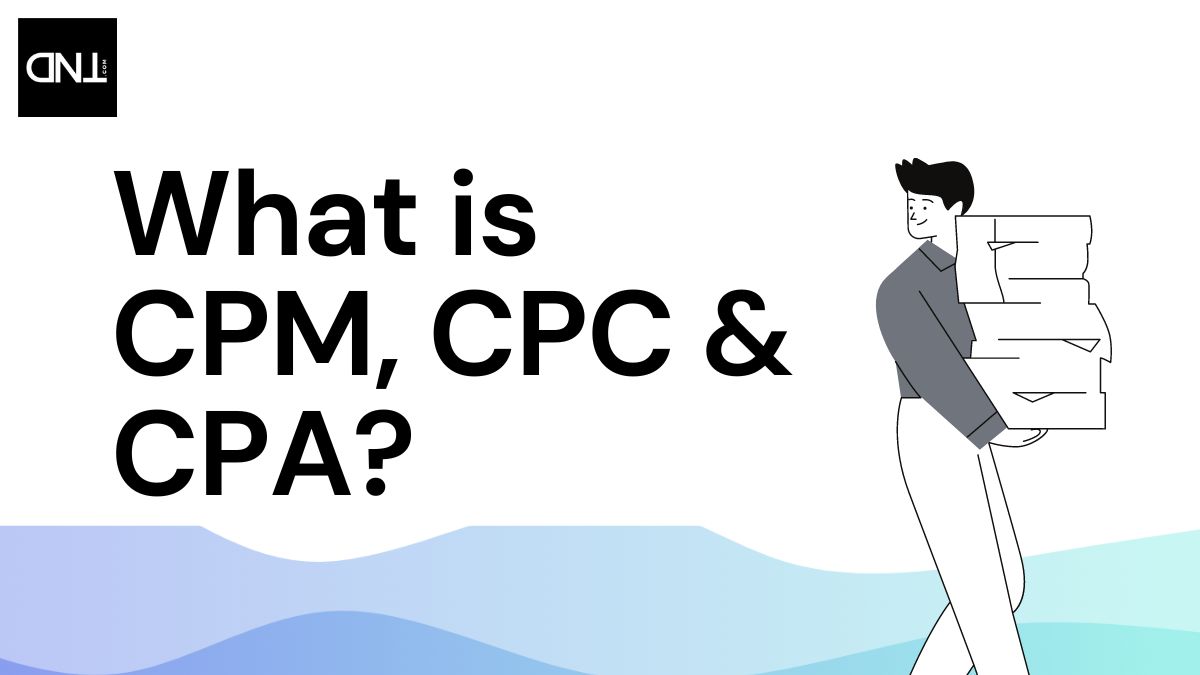CPM, CPC, CPA in Digital Marketing – Better Pricing Model?
For newcomers, the abbreviations and terms used in the field of digital marketing might be puzzling. CPM, CPC, and CPA are the three pricing models in digital marketing that are most frequently used. We’ll go over each of these terms’ definitions, applications in digital marketing, their pros and cons, and how to choose the right pricing model.
Digital marketing is now an essential part of many companies’ marketing plans. Given the rising popularity of digital marketing, it’s critical to comprehend the many price structures that are available. CPM, CPC, and CPA are the three most often used pricing models in digital marketing.
CPM – Cost per Mille
CPM stands for “cost per mille,” where mille refers to one thousand impressions. This pricing model is based on the number of times an ad is displayed to a user, regardless of whether the user clicks on the ad or not.
Definition and Calculation
The term “cost per mille,” or CPM, refers to the price for every 1,000 impressions. This price structure is dependent on how frequently an advertisement is shown to a user, and whether or not the user clicks on the advertisement.

Pros and Cons Of CPM
CPM
| Pros | Cons |
|---|---|
| Predictable Advertising cost | Limited engagement |
| Brand building awareness | Inefficiency due to Overexposure |
| Greater control over ads | Impression-based targeting is limited |
CPC – Cost per Click
The acronym CPC stands for “cost per click.” This price scheme is determined by how frequently a person hits an advertisement.
Definition Of CPC and Calculation
The cost per click (CPC) is computed by dividing the overall advertising campaign cost by the number of clicks. The CPC, for instance, would be $10 for a $1,000 advertising campaign that received 100 clicks.
Pros and Cons Of CPC
| Pros | Cons |
|---|---|
| Provides High engagement | No guaranteed click rate |
| More Cost-effective | Less exposure than CPM |
| More Audience Targeted | Risk of click fraud |
CPA – Cost per Acquisition
The term “cost per acquisition,” or “cost per action,” is abbreviated as “CPA.” The frequency with which a user does a certain action, such as making a purchase or completing a form, determines the pricing structure.
Definition and Calculation
The cost per action (CPA) is computed by dividing the entire campaign expense by the total number of desired activities. The CPA would be $10, for instance, if an advertising campaign costs $1,000 and generates 100 sales.
Pros and Cons Of CPA
| Pros | Cons |
|---|---|
| More Conversion Targeted | Restricted Ad placement control |
| Cost Effective | Uncertain cost |
| High Return on Investment (ROI) | More time consuming |
Choosing the Right Pricing Model
When deciding on the best price plan for a digital marketing campaign, numerous things must be considered. The campaign’s goal is one of the most crucial considerations. If increasing brand awareness is the goal, CPM may be the best alternative. If increasing website traffic is the aim, CPC may be the best alternative. CPA may be the best option if the goal is to generate conversions.

Another consideration is the target audience. Some audiences are more inclined to click on an advertisement, while others are more likely to convert. It is critical to select a pricing plan that is appropriate to the intended audience.
Finally, the campaign’s budget should be considered. Some pricing models are more expensive than others, so it’s important to select the one that fits your budget.
| CPM | CPC | CPA |
|---|---|---|
| Excellent for increasing brand awareness | Pricing depends on performance | Excellent for increasing conversions. |
| High impression volume at a low cost | Effective in increasing visitors to your website | Only pay for specific actions. |
| Offers a guaranteed number of ad impressions | Allows companies to set a maximum bid. | Businesses may decide on a maximum fee per action. |
FAQs related to CPM, CPC, CPA
What does CPA stand for in media?
The term “cost per action” (CPA) in media is used. It is a pricing system used in digital marketing where the advertiser only pays when a particular action, like a purchase or sign-up, is performed.
What is CPC and CPA in digital marketing?
Digital marketing abbreviates the terms “cost per click” (CPC) and “cost per action” (CPA). Both of these pricing models are employed in digital advertising to establish the cost related to each ad interaction for advertisers. CPA is based on the number of particular activities accomplished, such as a purchase or sign-up, whereas CPC is based on the number of clicks an ad receives.
What is CPA post?
The phrase “CPA post” is uncommon in digital marketing and advertising. It could, however, be a reference to a social media post with a call-to-action (CTA) intended to encourage a particular activity, like a purchase or sign-up, for which the advertiser is using a cost-per-action (CPA) pricing model.
What is CPA in Amazon PPC?
In Amazon PPC, CPA stands for “cost per acquisition.” This pricing structure enables marketers to charge for particular activities, such a purchase or sign-up, as opposed to clicks or impressions.
Conclusion
Finally, understanding the various pricing strategies in digital marketing can be critical in building a successful campaign. CPM, CPC, and CPA are three of the most typical pricing models, each with its own set of benefits and drawbacks. Businesses can maximize the efficacy of their digital advertising campaigns by selecting the appropriate pricing model depending on campaign goals, target audience, and budget.

Pingback: CPM, CPC, CPA in Digital Marketing - Better Pri...